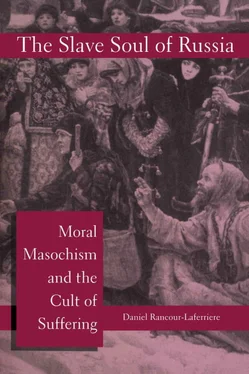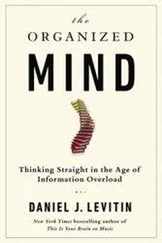In the instruction Nikon wrote: “Year and date. According to the tradition of the Holy Apostles and the Holy Fathers it is not your bounden duty to bow down to the knee, but you are to bow to the waist; in addition, you are to cross yourself with three fingers.” Having come together we fell to thinking; we saw that winter was on the way—hearts froze and legs began to shake. Neronov turned the cathedral over to me and went himself into seclusion at the Chudovsky monastery; for a week he prayed in a cell. And there a voice from the icon spoke to him during a prayer: “The time of suffering hath begun; it is thy bounden duty to suffer without weakening!” 34
And suffer the Old Believers did. The Life of the Archpriest Avvakum Written by Himself is filled with grisly scenes of flogging, burning, mutilation, starvation, forced labor, and other horrors—all welcomed in the name of Christ:
Down came the rain and snow, and only a poor little kaftan had been tossed across my shoulders. The water poured down my belly and back, terrible was my need. They dragged me out of the boat, then dragged me in chains across the rocks and around the rapids. Almighty miserable it was, but sweet for my soul! I wasn’t grumbling at God…. The words spoken by the Prophet and Apostle came to mind: “My son, despise not thou the chastening of the Lord, nor faint when thou art rebuked of him. For whom God loveth he chasteneth, and scourgeth every son whom he receiveth. If ye endure chastening, God dealeth with you as with sons. But if ye partake of him without chastisement, then are ye bastards, and not sons.” And with these words I comforted myself. 35
Fortunately for Avvakum’s reader, there is some occasional comic relief. Avvakum is capable of making fun of himself, he gently humiliates himself (this is part of his masochism) and his tormentors. 36He is aware of his own narcissism, for he confesses to the pride which moved him to become self-appointed leader of his schismatic religious movement. As Priscilla Hunt observes, the revelation of this pride “…went beyond the conventional self-denigration of the humility topos.” 37There is a grandiose flair to Avvakum’s masochism. His “voluntary suffering,” his “self-abnegation and debasement” 38entitled him to assume leadership of what he felt was the true spiritual way for Russia. And for this political prominence he paid precisely what he wanted to pay: he and three of his companions were placed in a pit filled with wood and burned to death.
Many lives came to a violent end during the apocalyptic days of the Russian schism. Avvakum and other leaders of the Old Believers sometimes even glorified suicide. Christ himself, after all, had welcomed the cup of death. There are numerous reports of both individual and mass suicides (usually by burning, sometimes by drowning) in the Old-Believer communities. A “deranged love affair with death,” as Brostrom calls it, spread across the northern forests of Russia. 39For example, in a village in the Ustiug region on October 8, 1753, 170 Old Believers—men, women, children—locked themselves in a large hut and would not let two Orthodox priests approach to dissuade them from their intention to “suffer in the name of Christ and for the two-fingered sign of the cross.” Then, after shouting obscenities at the priests, they proceeded to set fire to the hut, and all inside died in torment. 40
D. I. Sapozhnikov, who has written an entire book on this horrifying subject, provides a chart detailing fifty-three recorded incidents of individual or mass self-immolation in the seventeenth and eighteenth centuries. The chart indicates a grand total of 10,567 victims, although the actual figure is undoubtedly higher because it was impossible to record all incidents of group suicide in the far-flung Old-Believer communities. 41
As historian Robert Crummey observes, “the Old Believers wanted martyrdom and were willing to go to great lengths to organize suitable circumstances.” Their “urge for passive suffering” provides a striking illustration of a specific, religious type of masochism. The various instances of mass suicide among Old Believers had “psychological rather than social roots.” 42A psychoanalyst can only agree with this assessment by a professional historian.
Old Believer communities exist in remote parts of Russia to this day. The self-immolation practiced by some Old Believers eventually became an emblem of Russia’s dark side. Mussorgsky’s great opera Khovanshchina , for example, is based on events surrounding the Old Believer schism, and ends with a mass suicide by fire. Avvakum’s autobiography exerted an enormous influence on the Russian radical intelligentsia, and on such literary artists as Merezhkovskii, Voloshin, and Nagibin. 43There is probably an interesting article waiting to be written about the similarities between what Ziolkowski calls Avvakum’s “auto-hagiography” and Aleksandr Solzhenitsyn’s narcissistically charged The Calf Butted the Oak .
Christian Russia was (and in some respects still is) a land of myriad schismatic and sectarian groups, most of which arose in the seventeenth and eighteenth centuries. In addition to the Old Believers (including the numerous subgroups within this group, such as priested and priestless varieties, or those who “wander” and those who do not) there are, to name a few: the Dukhobors or “wrestlers for the spirit,” who reject established churches and civil authority; the Molokans or “milk drinkers,” whose asceticism is moderate and who eat dairy products on days of fasting; the Khlysty or “Flagellants”/“Christs,” who attain religious ecstasy (“radenie”) by various forms of self-mortification including possibly self-flagellation (depending on which expert you consult); the Postniks or “fasters;” and the Skoptsy or “castrators,” who (the experts agree) mutilate themselves by removing their reproductive organs. 44
Again, Billington refers explicitly to the “masochistic” qualities of Russian sectarianism. 45The masochism is particularly obvious among the Skoptsy, although it does not appear to be erotogenic, even though the sexual organs are involved. That is, the mutilation does not involve sexual orgasm. Indeed, guilt over sexual feelings seems to be the cause of the mutilation, for such feelings were perceived as an obstacle to spiritual salvation. Among men one testicle might be removed (“poluoskoplenie” [half castration]), or both (“malaia pechat’” [minor seal]), and sometimes the penis itself would be removed as well (“bol’shaia pechat’” [major seal] or “tsarskaia pechat’” [the tsar’s seal]). Among women the nipple(s) or the entire breast(s) would be removed. The clitoris and/or labia would be cut out in some cases. Many, perhaps the majority of the Skoptsy, however, preferred “spiritual” castration, that is, sexual abstinence, to actual bodily mutilation.
As a result of their extreme practices members of some of the sects imagined that they became “Christs” (or, if women, “Bogoroditsy” or “Mothers of God”). This idea is actually a logical extension of a notion prevalent among all practicing Christians in Russia. The ideal sufferer in the “Russian religious mind” (to use Fedotov’s expression) is, after all, Christ himself. Averintsev says that Russian saintliness is characterized by the most literal possible imitation of Christ, by a total willingness to “turn the other cheek,” as Christ both practiced and preached. 46For example, Saint Boris “imitated” Christ (the verb is “s” podobiti”). 47Epiphanius says of Sergei of Radonezh that “in all things and at all times he imitated his Master Jesus Christ our Lord….” 48Professor Brostrom has examined Avvakum’s imitation of Christ in some detail. 49The monastic director (“starets”) Amvrosy (1812–91) repeatedly advised his listeners and correspondents to imitate Christ, for example: “You should… try in every way possible to pull out this root [of evil], through humility, obedience, and imitating the Lord Himself Who humbled Himself to the form of a servant and was obedient to death on the Cross and crucifixion.” 50
Читать дальше












